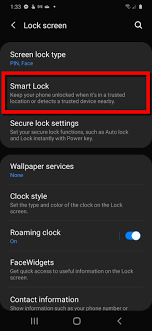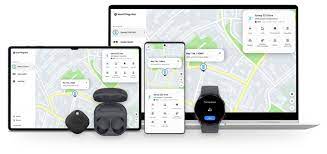Are You Sure You Forgot It?
If you've just typed "How do I unlock my Android phone if I forgot my PIN" into Google and found yourself in this article, before you proceed any further it's wise to take a moment to make sure you've actually forgotten your passcode. While this may seem obvious, it will save you a lot of hassle in the long run.
Android lets you choose any number of digits for your PIN. If you're trying to recall a four or six-digit code, consider whether your passcode is of a different length. This may help you remember it.
If you're sure that you've forgotten your Android PIN, here are some ways to unlock your phone.
1. Unlock With Smart Lock
Smart Lock is an Android feature that lets you specify certain conditions that bypass your lock screen security. You'll find it under Settings > Security > Smart Lock on most phones or Settings > Lock Screen > Smart Lock on Samsung devices.
However, you must have set it up before you forgot your PIN!

Note that you must input your current lock password to make changes to the feature. Then you can choose three possible options to unlock your smartphone without a password:
- On-body detection: The phone senses that you're carrying it and automatically stays unlocked while in your hands or pocket.
- Trusted places: Uses your location to unlock your phone when you're near your selected address.
- Trusted devices: Keeps your device unlocked when connected to a trusted Bluetooth device, like your fitness tracker or car.
If you've already set up one or more of these options before you forgot your password, you can use it to get back into your phone.
However, you can't change Smart Lock or password settings without entering your current password. Thus, you may still need to factory reset your Android phone, but at least you can back everything up first.
2. Use SmartThings Find on Samsung Devices
Have a Samsung device? You don't have to be concerned if you've forgotten your device's screen lock code, as Samsung offers a simple way to reset your lock code if you forget it.

The company offers a feature called SmartThings Find for all of its phones. This lets you remotely manage your Samsung device if you lose it. You must be signed in to your Samsung Account on your phone and have a Wi-Fi or mobile data connection.
To reset your phone's passcode through SmartThings Find, follow these steps:
- On your computer, navigate to the Samsung SmartThings website.
- Now, sign in to your Samsung account.
- Once done, select your smartphone name and click on the Unlock option.
- Click the Unlock button and enter your account password in the next window.
That's it. It'll take a few seconds, and your phone will be unlocked thereon.
3. Use the Forgot Password Prompt
If the previous methods are not working, some manufacturers, such as Realme, provide a built-in feature to help you regain access. This is called the "Forgot Password" prompt.
When you enter an incorrect password multiple times, some devices may display a Forgot Password or Forgot PIN option on the lock screen. Tapping on this option will lead you through several steps to verify your identity and reset your lock screen passcode.
In some cases, the verification process includes entering your email address connected to your device. On the other hand, some devices ask you to answer some security questions set up by the owner in the device settings. Once you verify your identity, you'll see some on-screen instructions to set a new passcode for your device.
4. Delete the PIN File Using ADB
In Android, the system generates a KEY file to keep user credentials, such as fingerprints, patterns, or other passwords. This ensures that when you input the correct password, the system immediately unlocks and denies access to the phone when the wrong password is entered.
Using the Android Debug Bridge (ADB) utility, you can access your phone's files through your computer. You can utilize this to delete the file that controls the phone's lock screen security.
However, this method will only work if:
- USB debugging is enabled on your phone. If you've never dived into the Developer Options panel, you don't have it enabled.
- You've allowed your computer to connect to your phone via ADB.
- Your phone is not encrypted. With Android 6.0 Marshmallow, Google requires all Android phones to ship encrypted. Thus, this won't work for newer devices.
Warning: This method only works for older Android versions! If you receive an error saying "rm: /data/system/gesture.key: No such file or directory", it means you can't bypass the lock screen this way.
This method isn't guaranteed to work, and if you're not careful, it could damage your phone. As a result, we highly recommend that you back up everything on your Android device before continuing.
If your phone meets these requirements, you can unlock your phone with the following steps:
- Connect your phone to your computer via a USB cable.
- Open a Command Prompt or Terminal window to your ADB installation directory.
- Type in adb shell rm /data/system/gesture.key and press Enter.
- Reboot your phone. Once you do, the secure lock screen should be gone.
- This is temporary, so reset your PIN or pattern lock before rebooting.
5. Perform a Factory Reset
If none of the above works for you, you must do a factory reset. Of course, this erases all the data on your phone as well. If you've signed in to your Google account and backed up to it, you can sign back into that account after the reset and restore much of your data.
Since you're locked out, you'll need to use another method to do the reset. The easiest way is to use Google's Find My Device website. As long as you've enabled this feature on your phone, you can click the ERASE DEVICE option on this page to reset it.
If you can't use this method, you must factory reset manually. To do so:
- Power your device off.
- After the screen goes completely black, press and hold the volume down and power buttons simultaneously to bring up Android's bootloader menu. This button combination may be different depending on your phone.
- Press the volume down button twice to highlight the Recovery Mode option, then press the power button to select it.
- Hold the power button and press the volume up button once to enter recovery mode.
- Use the volume buttons to go to the Wipe data/Factory Reset option. Proceed with the steps to perform a factory reset.
- Once the device reboots, walk through the setup again. You'll be prompted to log back into your Google account, which will restore any backed-up data.
We recommend enabling the Smart Lock feature when you set up your phone. This way, you can effortlessly unlock your Android phone on your home Wi-Fi and avoid manually unlocking your phone each time.
Preventing Future Lockouts on Android
These methods can get you back into your Android phone but won't help you remember your password for future logins. You don't want to go through these steps again, so it's better to take precautions now so that you won't forget your passcode in the future.
Here are a few tips for remembering your Android password in the future.
- Keep a physical copy of your password in a place you can access, like a safe or password manager.
- Always use a strong password that you can remember instead of using something obvious.
- Ensure you're signed in to your Google (and Samsung, if applicable) accounts and have enabled at least one Smart Lock option.
- Back up your Android data to soften the blow if you have to factory reset it again.
Remembering Your Passcodes
These days, we're prompted to have a password for almost everything, and it can be tricky to remember them all. Password managers can help you keep tabs on your different passwords, but they aren't handy if you've forgotten your Android phone PIN.
To prevent you from having to reread this article in the future, it's worth having your Android phone passcode written down somewhere safe at home.
source: MUO







